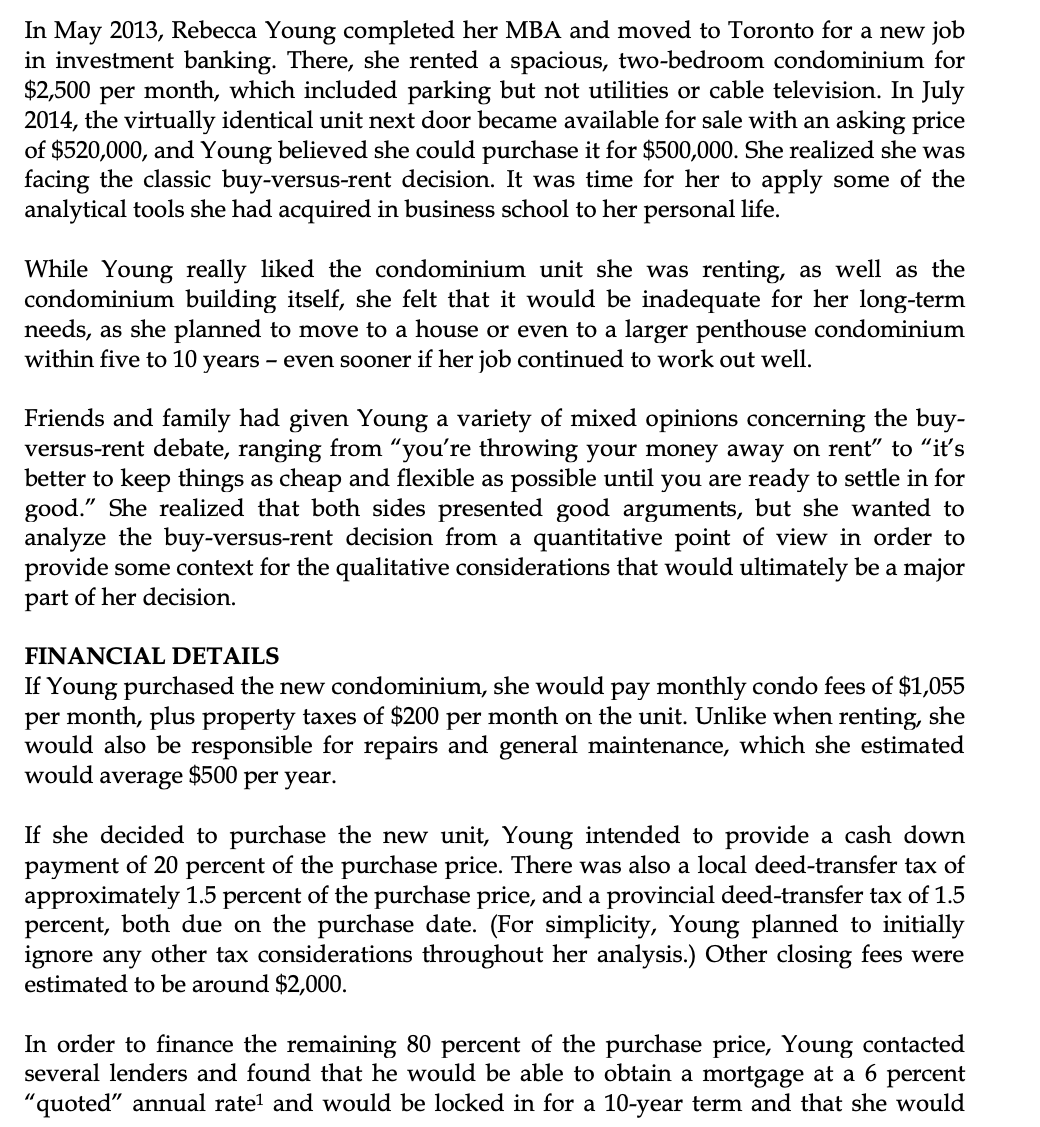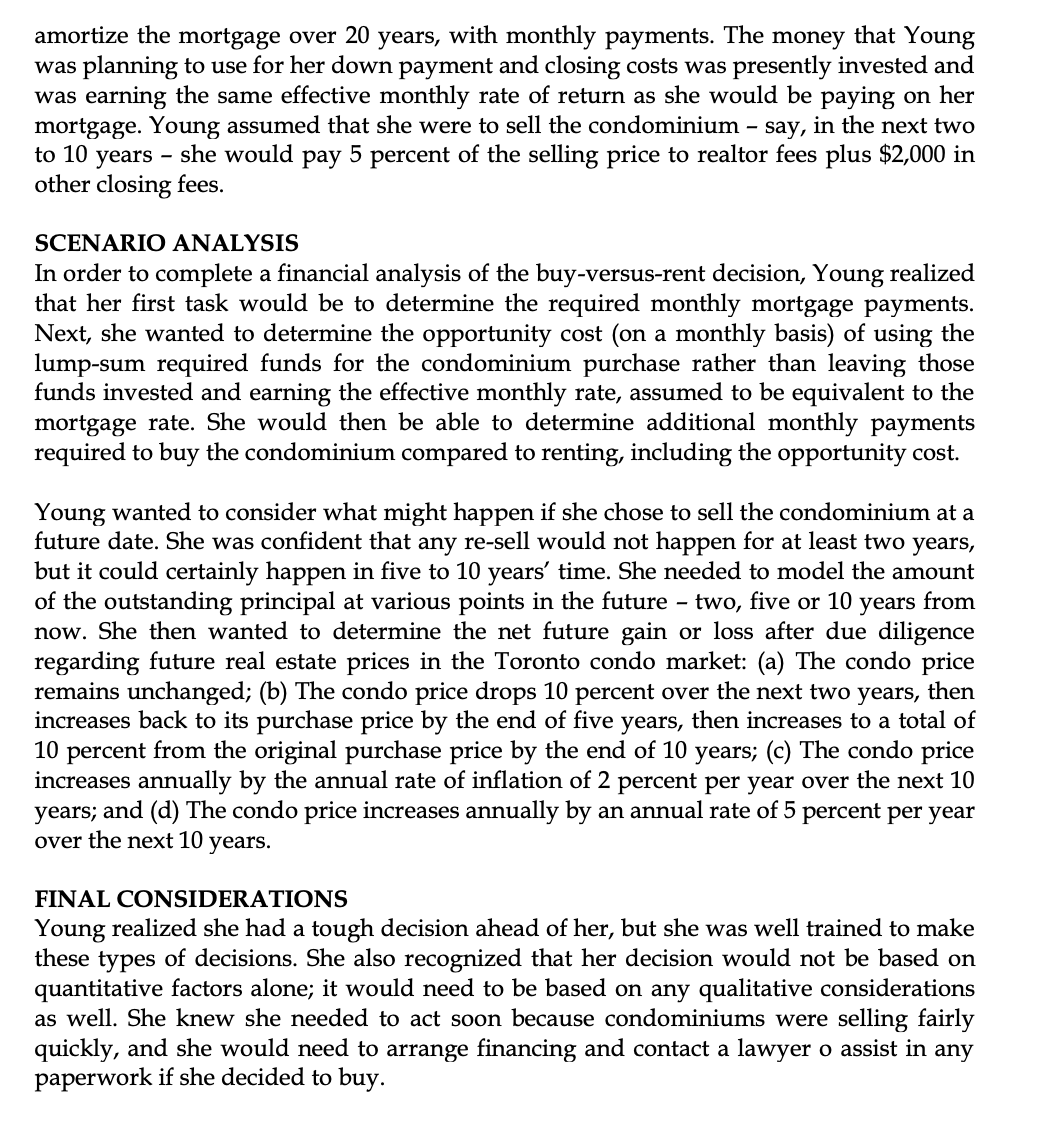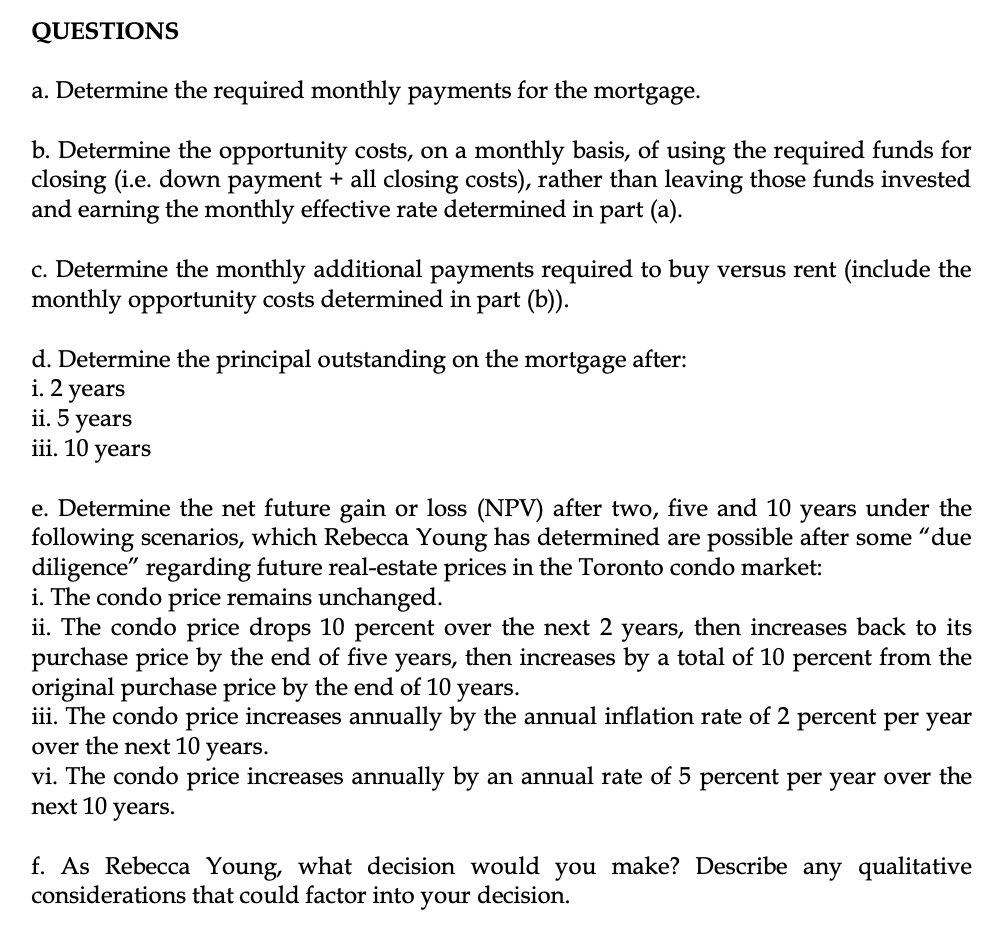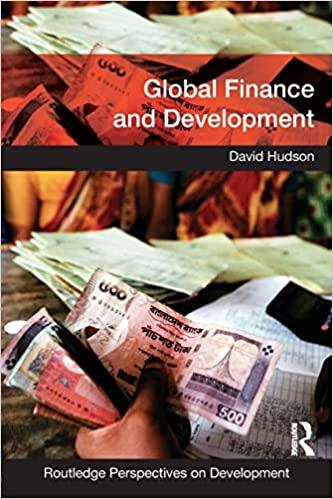Please use excel :) 


amortize the mortgage over 20 years, with monthly payments. The money that Young was planning to use for her down payment and closing costs was presently invested and was earning the same effective monthly rate of return as she would be paying on her mortgage. Young assumed that she were to sell the condominium - say, in the next two to 10 years - she would pay 5 percent of the selling price to realtor fees plus $2,000 in other closing fees. SCENARIO ANALYSIS In order to complete a financial analysis of the buy-versus-rent decision, Young realized that her first task would be to determine the required monthly mortgage payments. Next, she wanted to determine the opportunity cost (on a monthly basis) of using the lump-sum required funds for the condominium purchase rather than leaving those funds invested and earning the effective monthly rate, assumed to be equivalent to the mortgage rate. She would then be able to determine additional monthly payments required to buy the condominium compared to renting, including the opportunity cost. Young wanted to consider what might happen if she chose to sell the condominium at a future date. She was confident that any re-sell would not happen for at least two years, but it could certainly happen in five to 10 years' time. She needed to model the amount of the outstanding principal at various points in the future - two, five or 10 years from now. She then wanted to determine the net future gain or loss after due diligence regarding future real estate prices in the Toronto condo market: (a) The condo price remains unchanged; (b) The condo price drops 10 percent over the next two years, then increases back to its purchase price by the end of five years, then increases to a total of 10 percent from the original purchase price by the end of 10 years; (c) The condo price increases annually by the annual rate of inflation of 2 percent per year over the next 10 years; and (d) The condo price increases annually by an annual rate of 5 percent per year over the next 10 years. FINAL CONSIDERATIONS Young realized she had a tough decision ahead of her, but she was well trained to make these types of decisions. She also recognized that her decision would not be based on quantitative factors alone; it would need to be based on any qualitative considerations as well. She knew she needed to act soon because condominiums were selling fairly quickly, and she would need to arrange financing and contact a lawyer o assist in any paperwork if she decided to buy. b. Determine the opportunity costs, on a monthly basis, of using the required funds for closing (i.e. down payment + all closing costs), rather than leaving those funds invested and earning the monthly effective rate determined in part (a). c. Determine the monthly additional payments required to buy versus rent (include the monthly opportunity costs determined in part (b)). d. Determine the principal outstanding on the mortgage after: i. 2 years ii. 5 years iii. 10 years e. Determine the net future gain or loss (NPV) after two, five and 10 years under the following scenarios, which Rebecca Young has determined are possible after some "due diligence" regarding future real-estate prices in the Toronto condo market: i. The condo price remains unchanged. ii. The condo price drops 10 percent over the next 2 years, then increases back to its purchase price by the end of five years, then increases by a total of 10 percent from the original purchase price by the end of 10 years. iii. The condo price increases annually by the annual inflation rate of 2 percent per year over the next 10 years. vi. The condo price increases annually by an annual rate of 5 percent per year over the next 10 years. f. As Rebecca Young, what decision would you make? Describe any qualitative In May 2013, Rebecca Young completed her MBA and moved to Toronto for a new job in investment banking. There, she rented a spacious, two-bedroom condominium for $2,500 per month, which included parking but not utilities or cable television. In July 2014, the virtually identical unit next door became available for sale with an asking price of $520,000, and Young believed she could purchase it for $500,000. She realized she was facing the classic buy-versus-rent decision. It was time for her to apply some of the analytical tools she had acquired in business school to her personal life. While Young really liked the condominium unit she was renting, as well as the condominium building itself, she felt that it would be inadequate for her long-term needs, as she planned to move to a house or even to a larger penthouse condominium within five to 10 years - even sooner if her job continued to work out well. Friends and family had given Young a variety of mixed opinions concerning the buyversus-rent debate, ranging from "you're throwing your money away on rent" to "it's better to keep things as cheap and flexible as possible until you are ready to settle in for good." She realized that both sides presented good arguments, but she wanted to analyze the buy-versus-rent decision from a quantitative point of view in order to provide some context for the qualitative considerations that would ultimately be a major part of her decision. FINANCIAL DETAILS If Young purchased the new condominium, she would pay monthly condo fees of $1,055 per month, plus property taxes of $200 per month on the unit. Unlike when renting, she would also be responsible for repairs and general maintenance, which she estimated would average $500 per year. If she decided to purchase the new unit, Young intended to provide a cash down payment of 20 percent of the purchase price. There was also a local deed-transfer tax of approximately 1.5 percent of the purchase price, and a provincial deed-transfer tax of 1.5 percent, both due on the purchase date. (For simplicity, Young planned to initially ignore any other tax considerations throughout her analysis.) Other closing fees were estimated to be around $2,000. In order to finance the remaining 80 percent of the purchase price, Young contacted several lenders and found that he would be able to obtain a mortgage at a 6 percent "quoted" annual rate 1 and would be locked in for a 10 -year term and that she would









